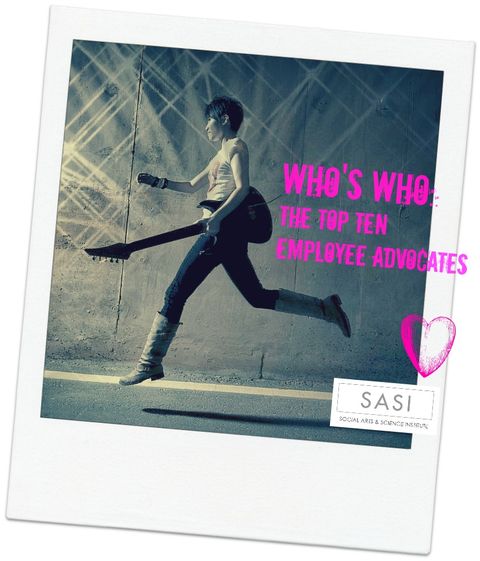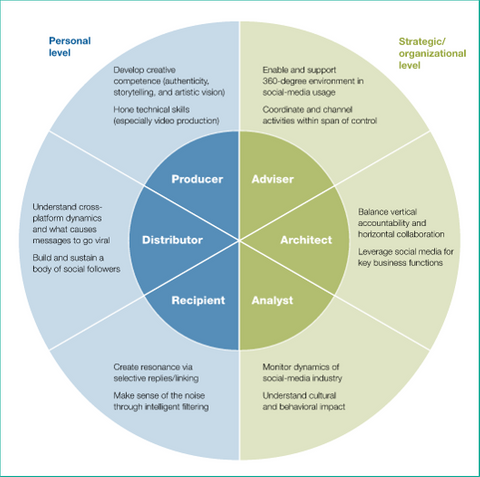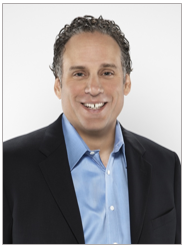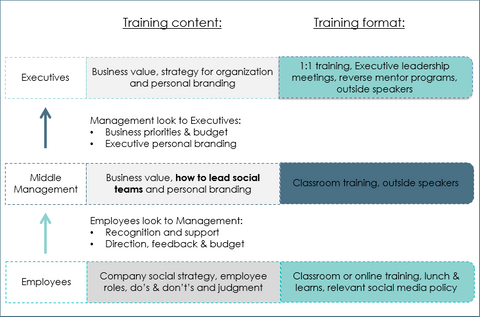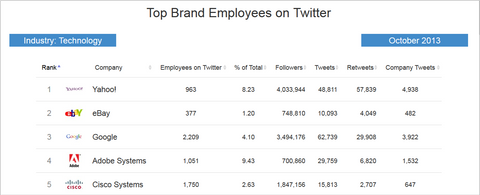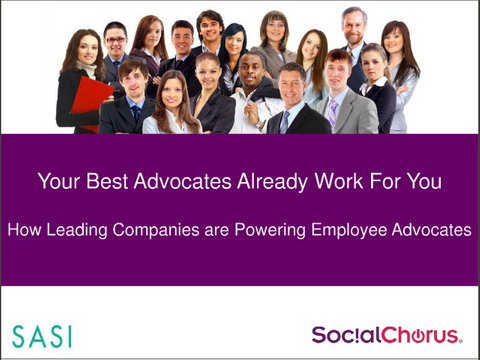Blog
Who’s Who: The Top Ten Employee Advocate Rock Stars of 2015
Liz Bullock
Today we are celebrating the Who’s Who list of The Top Ten Employee Advocates Rock Stars Edition from Social Arts & Science Institute (SASI).
Employee Advocates are a special breed of employees that care about the future success of their company, are passionate about customer relationships, take action beyond their defined job descriptions and are willing to forge new relationships online on behalf of their company.
Employee Advocates are different as they make their engagements visible, defend their employers from criticism and act as active advocates, online and off. Some of these recipients below are part of larger company initiatives while others have organically shown up out of self-motivation, passion and determination.
We strongly believe that Employee Advocacy is central to company success and is the underlying foundation for high-performing companies.
We are excited to celebrate this top ten list, in alphabetical order.
1. Amber Armstrong @Ambarmstrong
Submission by Amy Tennison, IBM
“Amber was one of the main people who helped implement IBM's first employee advocacy program with Dynamic Signal. Best practices from this program have since been mirrored across the entire company. She is also an avid user of the tool. She regularly tops the "best social sharer" leaderboard and shows up as one of the top sources for all the IBM Social Business campaigns across Twitter.”
more#HappyHolidays
SASI
Join us at SXSW for an Employee Advocate Meet Up
Sarah Finley
Coming to Austin next month for SXSW? Join SASI and SocialChorus on Saturday, March 8, 3-5pm for an afternoon of networking, drinks and a conversation about employee advocates, featuring innovative marketers from AT&T, Whole Foods and RadioShack.
Our panel of employee advocate experts will share best practices for powering employees to create and share brand content across all social networks. The panel features:
- Lee Diaz, Senior Manager, Emerging Communications, AT&T
- Natanya Anderson, Director, Social Media and Digital Marketing, Whole Foods
- Cosmin Ghiurau, Director, Social Media and Digital Strategy, RadioShack
- Liz Bullock, CEO and co-founder, SASI
They’ll also discuss how to:
- Motivate employees to create and share brand content
- Power employees to be thought leaders
- Prove the value of employee advocate marketing and justify the investment
Be sure to stick around after the panel for some great networking, snacks and drinks. We hope to see you there!
Saturday, March 8, 3-5pm
moreTell Them You Love Them! #nofilter (Celebrating Employee Advocates)
Liz Bullock
This upcoming Valentine’s Day, we want you to share with your rock star employee advocates how you feel about them.
We believe that successful employee advocate programs are those that create healthy relationships between the employee and brand. If employees are going to advocate and do extra work, they must feel loyalty, pride and excitement in order to promote, defend and educate on behalf of your company. How is your organization nurturing employees and ensuring they feel valued?
You are asking employee advocates to create human to human (H2H) relationships with your customers, prospects and peers online. As an organization, you need to be creating that same human relationship with your employees.
Also, employees who feel love perform better. According to a study by the Harvard Business Review, “employees who felt they worked in a loving, caring culture reported higher levels of satisfaction and teamwork.”
To help you celebrate your social media studs and studettes, we have four versions of Valentine’s Day cards to thank and recognize their efforts. Pick the version based on your current relationship status. Send them an email this week with one of the selected cards, plus a thank you note:
moreHow to Train Executives on Social Media
Maddie Schaffer
Social media has no place in business because it’s for teenagers taking photos of themselves with their breakfast, right?
That statement could not be more wrong. Social media, while relatively young, has become pivotal to business success. Companies must adopt social if they want to keep up and best serve their customers. However, a business can’t evolve socially without the help of their executives.
For the first time in executives’ careers, they are not the experts. Executives have advanced as far as they have due to their insurmountable knowledge and expertise. Now, a new misunderstood medium is taking storm and they just don’t see how it helps with their business. Executives sometimes look at social from the perspective of what they see at home: their daughters’ obnoxious tweets about last night’s episode of Vampire Diaries or their second cousins’ political rants during the State of the Union. These misconceptions make social business adoption difficult for executives because they cannot see how to use the medium outside their personal lives. Now, their employees often have more knowledge and understanding of the medium.
If you want to get executives on board, you have to approach social in a way that will relate to their goals. Executives are often looking for measurable specifics: revenue goals, customer retention, new acquisitions, customer satisfaction, and talent acquisition. Social media can play a huge role in all these aspects of business, so be sure to show executives how social media can be tied to these objectives.
moreSocial Business New Year Resolution: Focus on Executive Adoption
Liz Bullock
With every January, most of us determine New Year's resolutions that will be the foundation of the year we desire. Let's all exercise in order to have a healthy, happy, and active year. For social organizations (or those working on becoming social), what is our focus or resolution to drive better results for the year? At SASI, we believe in resolving to attain Executive adoption, as they will support, cascade, lead, inspire, mandate and (hopefully) put dollars behind your social efforts.
Let's say you are envisioning launching an employee advocacy program for your employees to support key brand content and engage with customers online.
This project requires Executive support, budget and a formalized program for the employees. Wouldn't it be great to get all of the above and have the program in employee performance plans? Let's dream big, people!
To get your year kicked off right, we wanted to provide some excellent resources as you decide to tackle Executive adoption for your key social programs.
First, McKinsey published Six social media skills every leader needs, as they believe capitalizing on the transformational power of social media calls for a new type of leader. The report defines six dimensions for key leaders both personally and on behalf of the organization, as leaders must cultivate a new technology linked social infrastructure.
moreA case study: One Executive’s journey to create the first digitally connected, socially enabled organization
Liz Bullock
Bryan E. Jones, Dell’s VP of Marketing, believes the future of marketing is social, and that we will see this transformation in the next 12 months, and he’s forging ahead and covering new ground by inspiring social media adoption across his 200+ North America marketing team. “You will not have a career in marketing without this skill set.”
Listening and connecting with customers across social media has always been part of Dell’s business and heritage, but Bryan’s vision is to formalize this into performance plans and create the first fully digitally connected, socially enabled marketing organization inside Dell.
Why? Bryan believes that social media is critical to Dell’s competitive advantage, and is a critical skill set for his organization; he is staffing, training, rewarding and creating a cultural shift for adoption, innovation and a new way of operating.
In my interview with Bryan, he reiterated the importance of having his marketing team have the right skill sets: “It is a great time to be investing in people as marketing evolves.”
The plan? Create a cultural shift that ensures every marketer is trained and uses social media in their role on behalf of Dell. For annual performance plans, Bryan made it mandatory that every employee get certified by Dell’s social media training program, SMaC University.
moreDon’t Forget Middle Management in Your Social Media Adoption Plans
Liz Bullock
During Q&A at socialmedia.org’s #BrandsOnly summit, an audience member asked me, “What was your biggest lesson learned launching Dell’s social media training program?” My answer was simple. You must attain Executive support for launching a social media training and employee advocacy program, especially the middle management layer. Even if you think you have senior buy-in, ensure that middle management understands the value of social media and how to effectively lead (and manage) in the space.
Why? Middle management is the lynch pin for the success or failure of all the hard work, sweat, blood and tears that you have placed into your social media training and advocacy programs. You are trying to motivate and change behavior for individual employees. The majority of employees look to their direct management team for support and buy-in when it comes to their daily work.
Back in 2010, when we decided to launch Dell’s social media training program (SMaC University), we were bandwidth constrained (two of us) and had to strategically prioritize where we would focus on training Dell’s 110K employees.
As we looked at our socially active employees, we found 400+ individual contributors that were using social (some great, some not so great). We decided to focus our training program on the 400+ with all the materials, classes, pilots and programs geared towards individual contributors.
moreHoppy Hollandaise and a Naked New Ear
The SASI team
SASI wishes you all a wonderful holiday filled with lots of laughter, family and friends!
XOX — Sarah, Liz & Maddie
moreHoliday Gift Guide for Employee Advocates
The SASI Team
Looking for gift ideas for your favorite employee advocates? SASI has you covered, with some super sassy social surprises.
1. Keep your employees warm this winter with You “Tube” socks. ($7.40)
2. A Social Sticky Notes Pad will help your rock star employees keep track of the little things. ($4.49)
3. These small social media-themed pillows are a great complement to those uncomfortable office chairs. ($24.99-$32)
4. Get together and celebrate the holiday season with your social employees at a Tweetup party.
5. Employees will “like” using this coffee mug before (or during!) a hard day’s work. ($7.99)
6. For that extra special social employee, give the gift of LinkedIn Premium. ($19.95 for Business, $39.95 for Business Plus)
moreTop 10 Ideas: How to Run a Social Media Training Program
Maddie Schaffer
Interested in building out a training program to empower your employees on social media? Liz Bullock had the opportunity to share her top ten tips on this topic at SocialMedia.org #BrandsOnly Summit. Below are a few of my favorites.
Idea #1: Executives are critical for support and advocacy for social media training programs. In order to get their support, create a business case to help you sell your purpose, goals, and objectives for launching the program. Some executives are misinformed about social media and fail to see its business value. You will be challenged to drive employee adoption without their support, though, because who will motivate, rally, and encourage the teams to participate? Executives can be successful drivers for ensuring employees prioritize the training classes and adopt social as a business practice. Bryan Jones, VP of Dell, North America Marketing, has made Dell’s SMaC U certification training mandatory in their upcoming annual performance plans. How’s that for executive support?
Idea #4: Balance between the “what” and the “how.” What you train on is important, but you must balance the how and go back to your objectives of the training. If you are trying to activate employees and change employee behaviors, you may need to consider in-person training with enthusiastic and engaging trainers to ensure the information is adopted. Dell hired an ex-comedian and corporate trainer to deliver their training content to ensure it was exciting and empowering for employee adoption. Think about not just what you are teaching, but how you are teaching it in order to best drive your desired outcome.
moreTop 10 Things I’m Thankful For
Liz Bullock
Top 10 things I’m thankful for (In no particular order):
#1. Incredible and forward thinking clients, wanting to socially enable their workforce to make a business impact and closer customer relationships.
#2. Patient clients willing to delay our initial meeting, as I drove to a Mexican restaurant in Park City vs. their corporate headquarters in Salt Lake City.
#3. To an incredible partner who constantly shares diverse opportunities, even the idea of a bus tour! Stay tuned for SASI bus tour 2014!
#4. Great office location next to Austin’s town lake trail and never-ending list of juices (Juiceland!). New office address: 2307 Lake Austin Blvd, Austin, TX 78703
#5. For our clients and partners who appreciate our quirky sense of humor, random nicknames and ability to bring fun into the work environment.
#6. Ability to bring my dog, Mortimer, up to the office. Although, not sure the rest of the office is thankful for his gas…
#7. My supportive staff, family and friends, who have constantly cheered us on, celebrating every win and providing daily support.
moreTop 20 Tech Companies with Most Social Employees
Maddie Schaffer
Which companies have the most socially connected employees? SociaLook just launched a leaderboard of top tech companies with the highest employee Twitter engagement. Did you know Adobe has the highest percentage of its employees participating on Twitter with almost 10%*?
Companies have begun looking at how many active employees they have on social so they can better understand how to empower them. These powerful employees are sharing their companies’ stories, creating connections with potential and existing customers and fans. When active employees have conversations with followers, they show the human side to the company, fostering relationships between the consumers and the brand based on community and trust.
The SociaLook leaderboard for October 2013 ranks the largest 20 tech companies based on their employee engagement on Twitter. The rank is based on a composite score of various criteria, such as percent of total employees on Twitter and volume of followers impacted by employees. Yahoo!’s active employee base reaches over 4 million followers. How does the employee reach compare to the reach of your corporate accounts?
moreYour Best Advocates Already Work For You: How Leading Companies are Powering Employee Advocates
Sarah Finley
Employees are your key ingredient in the new social era.
Last week, SASI CEO Liz Bullock participated in a webinar with SocialChorus CEO Greg Shove on how brands can empower their employees to become advocates. Liz shared case studies on innovative companies that have tapped into the enormous potential that already lies within the walls of their own businesses.
For example, Cisco has found that their employees:
· Have 10x more followers than the Cisco corporate accounts.
· Share 29% more links about the company than the corporate accounts.
· Reach 2x more people than the corporate accounts.
Watch the webinar, or view the slideshow for more great advice on how and why to empower your employees.
moreEmployee Advocacy Maturity Assessment: Are you ready?
Liz Bullock
Is your company ready for an employee advocacy program?
Employee Advocacy has become the new trend this season. Where past social media conferences focused on Facebook and Twitter, this season’s agendas are filled with discussing employees advocacy programs and employee advocacy software tools.
Why employees?
Simply put, employees are a powerful and authentic resource to help scale your social business. Companies like Intel, Dell, Cisco, Sprint and others are seeing powerful results by activating social employees on behalf of the brand.
What is required to launch an employee advocacy program?
To activate employees, we believe you need five critical competencies. (Note, we will spend more time on each topic over the next few months.)
- Policies and Governance. A social media policy is a must. This is the foundation of how you activate employees in what they can and cannot do. If you have a policy, re-read it and see if it empowers employees. For a great example, check out Dell’s social media policy which uses real language and encourages employees to use social media on behalf of Dell (real language can be defined by no-lawyer speak).
- Training. We are huge fans of training employees, as they need to understand the rules of the road and best practices. They also need to understand their roles, plus what you would like for them to do.
- Metrics and Measurements. What are your business objectives? Why are you launching an employee advocacy program? What results would you like to see? You need to establish your objectives and tie metrics to your program. Starting off, your data may be more anecdotal, but that is okay. Anecdotal data can be very powerful, too.
- Tools & Technology. Tools are a must to help you drive your program, whether it is for effective measurement of the program, employee learning resources, or employee activation software platforms (SocialChorus, Dynamic Signal, EveryoneSocial, GaggleAmp, etc. are examples of employee advocacy software platforms.) Good luck trying to duct tape this program together via email.
- Leadership. This is one of the most critical competencies to support your employee advocacy program. You must have a senior leader to drive your advocacy program from the tops down. Leaders will play a critical role in rallying the troops, driving change behavior and impacting your results. (We will discuss more on this topic in later posts.)

